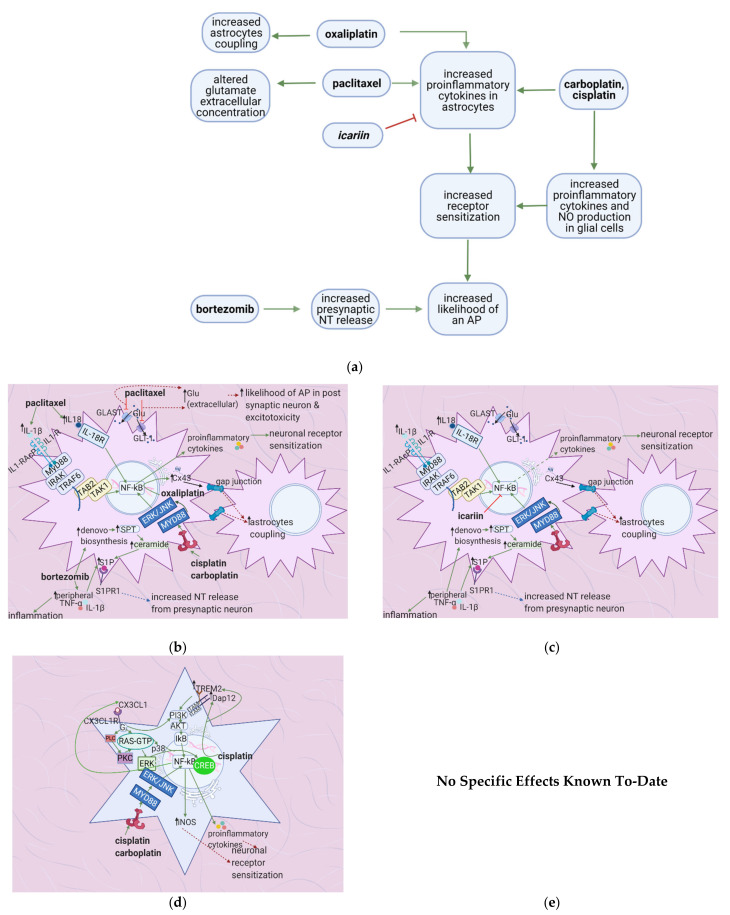Figure 6.
The actions of anticancer drugs (left) and flavonoids (right) on astrocytes and glial cells. (a) Simplified Overview of how flavonoids counteract the mechanisms of anticancer drugs at the level of astrocytes and microglial cells (b) Anticancer Drugs on Astrocytes. Anticancer drugs activate NF-κB and consequently lead to the production of proinflammatory cytokines that sensitize neuronal receptors. Bortezomib increases the levels of S1P, which is hypothesized to increase presynaptic NT release. Paclitaxel blocks glutamate receptors, thus increasing its extracellular concentration and increasing the likelihood of an AP in the post-synaptic neuron. (c) Flavonoids on Anticancer Drug-Induced Increases in Proinflammatory Cytokines in Astrocytes. Icariin inhibits NF-κB and thus counteracts the increase in proinflammatory cytokine levels, decreasing neuronal sensitization and inflammation. (d) Anticancer Drugs on Glial Cells. Anticancer drugs activate NF-κB and CREB, leading to proinflammatory cytokines and NO production, ultimately causing neuronal receptor sensitization. (e) No specific effects of flavonoids on microglial cells are elucidated to-date. Studies usually investigate the spinal cord dorsal horn as a whole.

